All about Strelitzia Nikolay
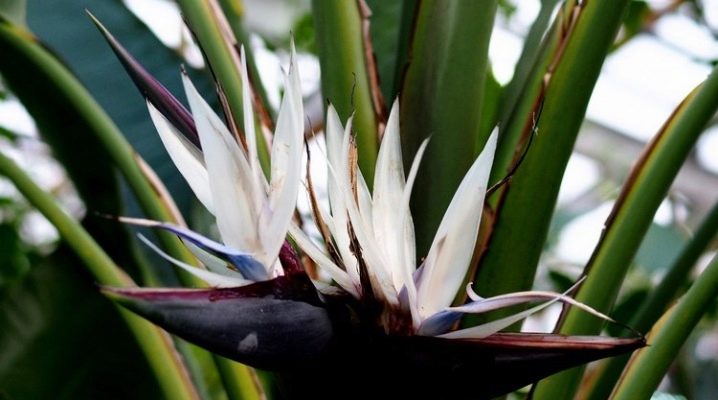
The assimilation of inaccessible corners of our planet by people has given mankind many new and unusual plants, which gardeners have tried to plant at home. The exotic and picturesque strelitzia became known to botanists back in the 19th century. And its variety - Nikolai's strelitzia - is successfully bred by many plant breeders of our country, even in urban apartments.

Description
It is a perennial plant with large evergreen leaves. The flowers of a plant with white petals and lilac bracts can be darker or lighter in color, depending on the variety of the plant. Moreover, the length of the petals reaches 16 cm. The shape of the peduncle itself is also interesting - it has 4 leaves in the form of a bird's head with a white crest and a purple beak. In its natural habitat, the plant reaches a record 10 m in height. Exquisite strelitzia bushes live even on the exotic island of Madagascar. And the royal strelitzia became the official flower of American Los Angeles.

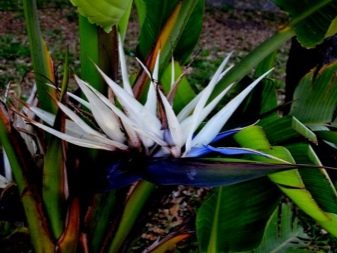
Strelitzia Nicholas has many other names: Strelitzia white, Nicholas, tree, "bird of paradise". Interestingly, the culture got its name in honor of Queen Charlotte, who owned the Strelitz trading house. And Nicolai - in honor of the Russian Tsar, or rather, one of the sons of Nicholas I, who oversaw the Petersburg Botanical Garden.
Due to its impressive size, such a plant is most often found in greenhouses. Of course, the apartments of especially skilled florists are no exception. After all, a plant can be grown even from a seed. True, in order to achieve flowering, the culture will have to provide almost greenhouse conditions. Landscapers and professional interior designers usually use varieties such as Nikolai's Strelitzia and Regina's Strelitzia in their work. They differ from each other in the shape of the leaf (in the first version it is larger, and in the second it is smaller and more oblong). Strelitzia Regina is more compact, therefore it is more suitable for breeding in ordinary city apartments, and Nikolai - in a botanical garden.
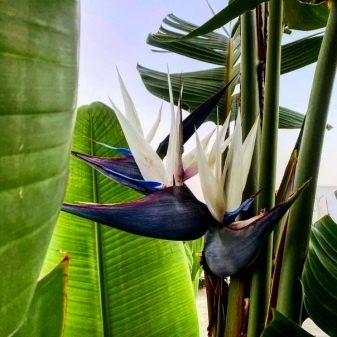

Location
"Wild banana", as Nikolai's strelitzia is called in another way, grows naturally in mountain gorges or forests of the Cape province in southwestern South Africa. When grown at home, the crop should be placed in a place where there is a lot of light. The southern sides with a distance from the window are only welcomed by flower growers. But in the summer, regardless of the region where you live, the plant should be taken out into the fresh air - for example, into the yard, on the terrace or balcony.
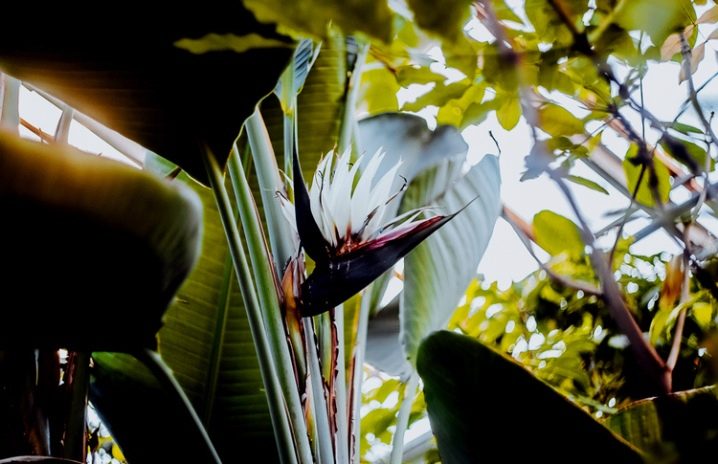
This plant usually does not grow above 1.5 meters in indoor conditions. And if other flowers are cultivated next to it, it is worth picking up plants for which a cool content is recommended in the cold season. At the same time, it is desirable, even in room conditions, to create the necessary differences in day and night temperatures for an exotic culture.
Planting and leaving
Planting and caring for Nikolai's strelitzia at home (for example, in a city apartment) is not very difficult. The soil can be composed of 50% universal soil, 10% sand and 40% leavening agents (perlite or foam balls). Before sowing in a pot, it is worth clearing the seeds from tuft, scalding it with soapy water and planting it in a previously prepared and disinfected soil. To achieve more successful germination, do not forget to air the plantings 2 times a day for 10 minutes.
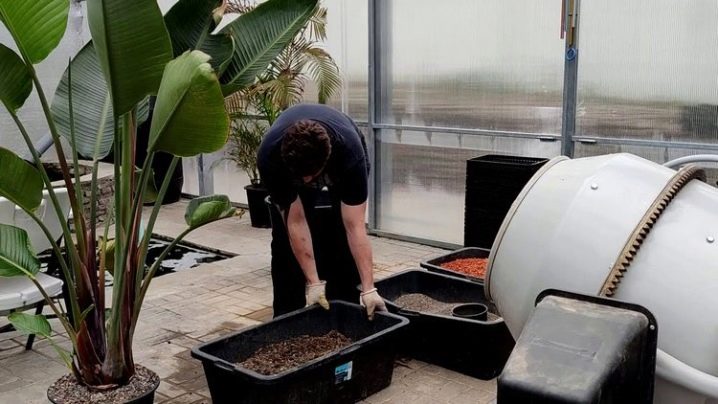
At a room temperature of 25-30 degrees Celsius, the first shoots usually appear within 1-1.5 months. At the same time, winter crops are supplemented with fluorescent lamps, and summer crops, on the contrary, are removed from the direct sun so as not to burn. The transplant is carried out in the presence of 2-3 leaves, and further transplants will be needed when the powerful roots outgrow the pot.
Water the plant abundantly, the main thing is to make sure that there is no stagnation of water in the pan to the pot. Once a week, you can feed the plantings with mineral fertilizer. But in the cold season, +15 degrees is enough for the plant for wintering. In this case, watering should be slightly reduced. The plant blooms from early January to late June, but in the first year after planting this is definitely not worth waiting for. In spring, thick trunks are decorated with white-blue inflorescences in greenish-red stipules.
Reproduction
Seeds
The main rule when germinating with seeds is that they must be fresh, because within six months after harvesting, 90% of the seeds lose their ability to germinate. Before sowing, the seeds are kept in lukewarm water for 24 hours. After swelling, the seeds are cleaned of fibers.
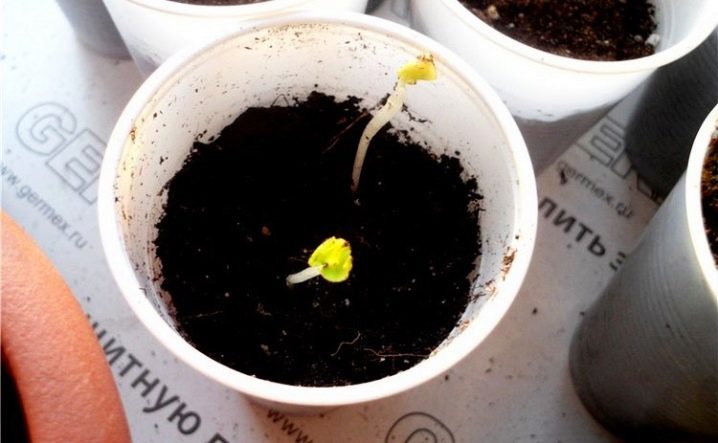
For sowing an exotic plant at home, it is best to use a mixture of sand, peat and compost. It is spilled with boiling water and placed in containers with drainage holes. After planting, the cups are covered with foil and placed in a warm place without direct sunlight.
The first leaf will appear only in a few months. Sprouts can be watered as the topsoil dries. As the plants grow, they must be transplanted into spacious containers so that the roots develop faster and the strelitzia grow faster. Now the plants can already be kept in the light at a temperature of about 21 degrees.
By dividing the bush
Another breeding option for Nikolai's strelitzia is by dividing bushes over 6 years old. After flowering, the rosettes with roots are separated from the plant, after pulling the plant out of the container. In a similar way, you can get a culture earlier than when sowing seeds. But, of course, it is worth working carefully and carefully with the roots so as not to damage them.

Diseases and pests
Subject to the growing conditions, the plant will not hurt. Waterlogging of the soil may pose a threat. Then rot may appear on the roots, and black spots on the leaves. Yellow foliage means the room is too cold for a flower, and dry air tends to dry out the edges of the leaves. If the bush has stopped growing, most likely, the roots do not have enough space in the cramped pot.
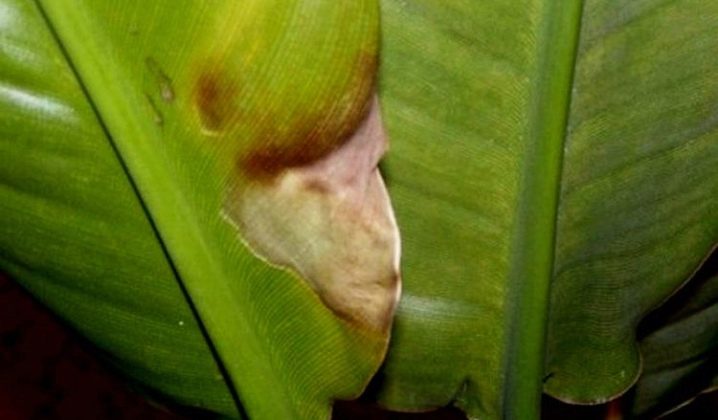
As for pests that can attack fleshy leaves and fragrant flowers, among them stand out: spider mites, scale insects and mealybugs. In the fight against them, acaricides and insecticides will help. In particular, it is recommended to use Aktar according to the instructions on the package. Re-treatment with this drug is carried out after 20 days.
Interior use
This plant is so exotic that it always attracts attention not only by its size, but also by its original flowers. Strelitzia looks beautiful in any modern interior because of the unusual huge leaves in the shape of a banana and bright flowers with a "beak of an outlandish bird". Best of all, the "bird of paradise" will fit into boho interiors. It is best to use it in the design of a room in an apartment where you love to relax with your household. The plant can be seen in modern studios and homes of famous designers. And images of strelitzia leaves are often adorned with modern fashionable textiles.
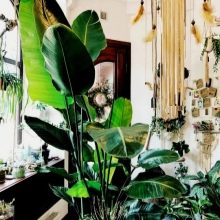
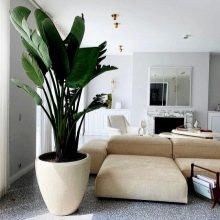

As already noted, the leaves of Nikolai's Strelitzia resemble the leaves of a banana tree. You can use the plant in the interior by placing it at a height of 70-80 cm from the floor. And if the arrow has "grown" up to 1.5 meters, place it directly on the floor. Strelitzia sets an accent vertical in the interior, does not take up much space and attracts the attention of guests.Perhaps some are stopped by the fact that Strelitzia is still exotic, which means that it is not easy to care for, but it is certainly worth decorating the interior with. A powerful flower will surely strengthen the internal energy of the owner and give harmony.













The comment was sent successfully.